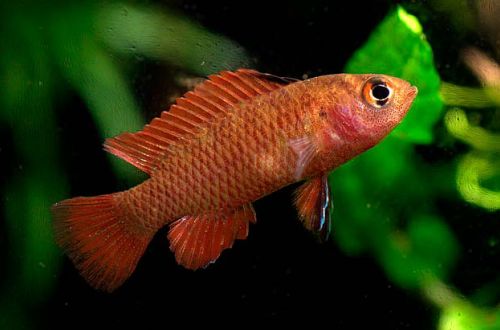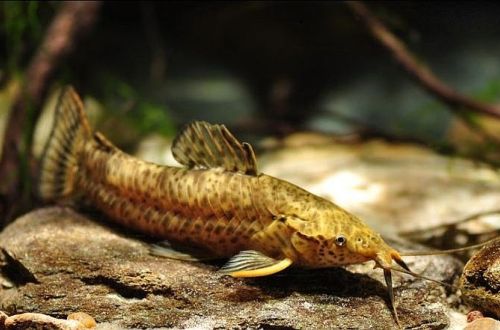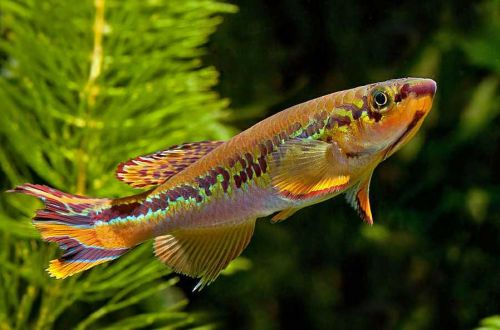
Dario red
Dario red, scientific name Dario hysginon, belongs to the Badidae family. Representatives of this family have a common ancestor with such groups of fish as Gourami and Petushki. With the latter, there is some morphological similarity, features of behavior and reproduction.

Contents
Habitat
The fish is native to Southeast Asia. It is considered endemic to a limited section of the Ayeyarwaddy Basin in Kachin State, Myanmar. Inhabits stagnant wetlands with dense aquatic vegetation and soft substrates.
Kachin State is one of the world’s largest hotspots of biodiversity and contains many endemic species. However, a significant part of the territory has already been destroyed due to illegal logging.
Description
Adult males grow up to 3 cm and develop large fins. There is a black spot on the dorsal fin. Females are somewhat smaller – no more than 2 cm, the fins are shorter, and the body is not so stocky. The coloration of both sexes is uniform reddish.
Behavior and Compatibility
Males compete with each other for territory and the attention of females. For this reason, in a small aquarium, only one male should be placed in the company of one or more females.
Otherwise, Dario red is peaceful and gets along well with other species of comparable size, for example, with Rasboras, Danio, etc. However, it should not be kept together with related species such as Badis Scarlet and Badis Chameleon, in order to avoid mutual aggression.
Brief information:
- The volume of the aquarium – from 40 liters.
- Temperature – 18-26°C
- Value pH — 6.5–7.5
- Water hardness – 5–15 dGH
- Substrate type – any soft
- Lighting – subdued
- Brackish water – no
- Water movement – little or no
- Fish size – up to 3 cm
- Feed – any food of suitable size, preferably live or frozen
- Temperament – peaceful
- Content – in a small aquarium in a pair of male / female or in a harem
Maintenance and care, arrangement of aquariums
The optimal size of the aquarium for a group of 3-4 fish starts from 40 liters. In the design, it is recommended to use a soft substrate and equip places with dense clusters of plants, including floating ones. Natural snags and leaves of some trees will be a good addition to the design.
When keeping several males, delimitation of space will be required. Since each of them will occupy an area of approximately 20 × 20 cm, then the center of each territory should be some kind of shelter between which free space should be provided.
Although Dario red is native to the tropics, the comfortable temperature is in the range of 15-25°C, which makes it possible to keep this species in unheated aquariums. The pH values should be in acidic values with low hardness.
Food
In nature, they feed on insect larvae, crustaceans and other zooplankton. Similar products should be used when feeding in the aquarium, eg brine shrimp, daphnia, live or frozen. In rare cases, they can be accustomed to dry food.
Bloodworms, which cause obesity, should not be fed, which makes the fish prone to various diseases due to digestive problems.
Breeding / breeding
The appearance of offspring is quite possible in the main aquarium. It was noted that spawning begins at a temperature close to the maximum allowable values - 24–25°C. With the approach of the breeding season, the male begins active courtship, inviting the female to his “center” of the territory. As a rule, the female lays and fixes the eggs on the underside of a large leaf, and this is where the breeding process ends for her. The male stays next to the clutch until the fry appear and protects it from encroachment.
The incubation period lasts 2-3 days. The fry that have appeared remain in place for a week and feed on the remains of their yolk sac, and only then begin to swim freely in search of food. The first food for fry should be microscopic ciliates, then Artemia nauplii, or specialized suspensions or powders for feeding juveniles of aquarium fish.
Due to the peculiarities of the diet, it is more expedient to feed fry in a separate tank than in a common aquarium.
Sources: flowgrow.de, fishbase.se





